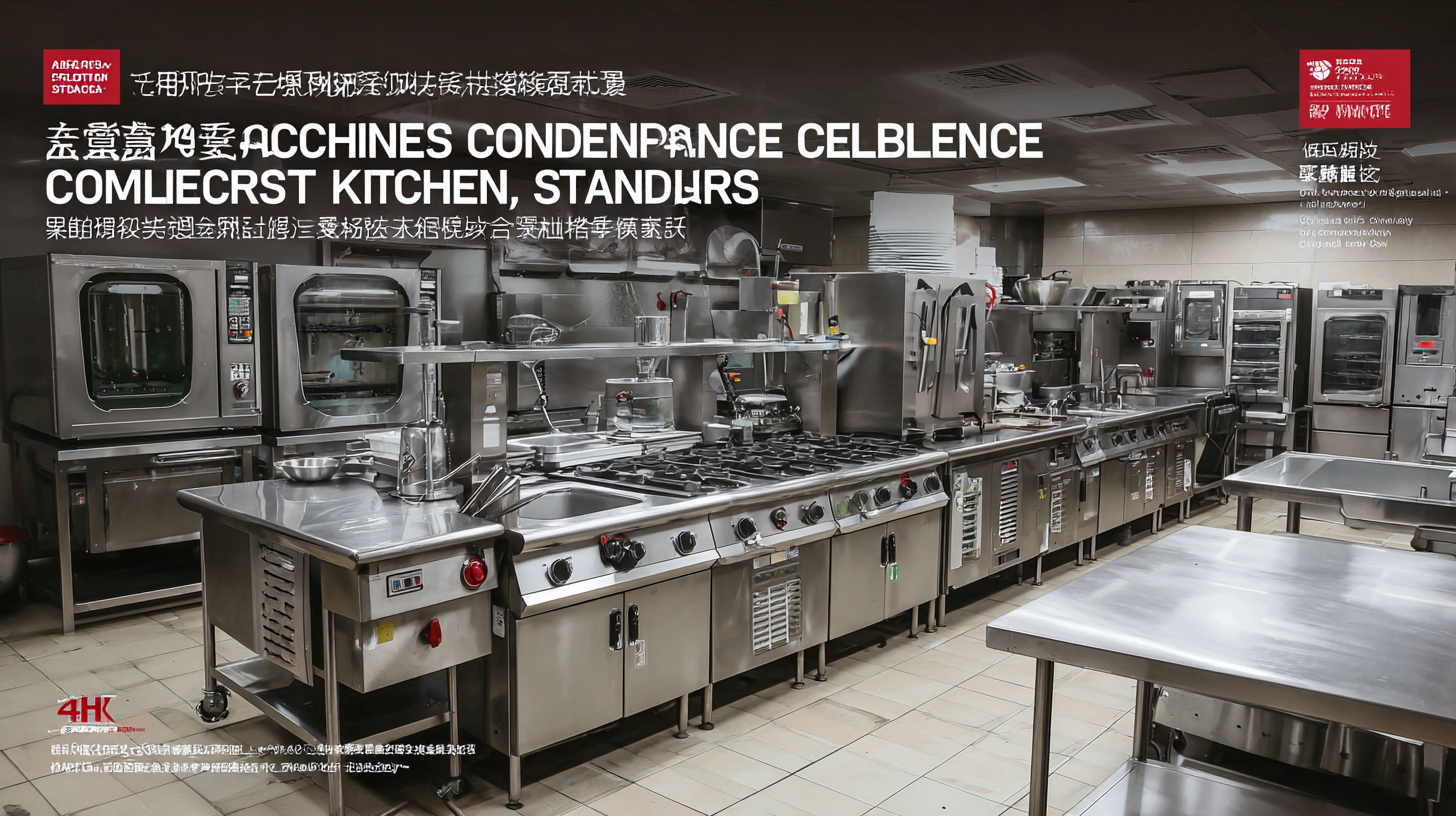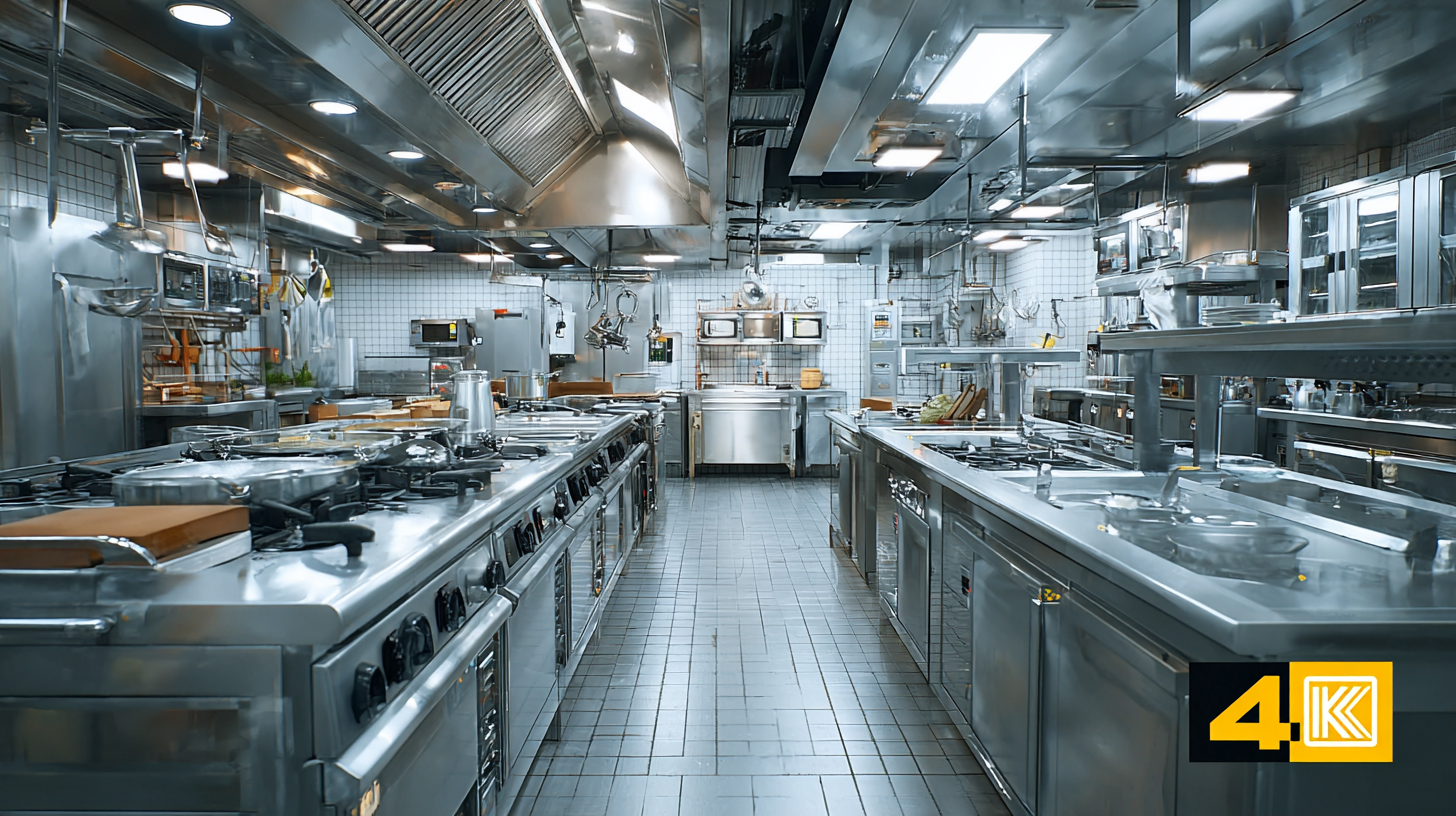Addressing Compliance Challenges: Ensuring Quality in the Best Kitchen Equipment Standards
In the fast-paced world of culinary arts, the quality and compliance of kitchen equipment are paramount to success. As chefs and restaurateurs strive to create exceptional dining experiences, they face the daunting challenge of navigating various standards and regulations that govern kitchen equipment. These compliance challenges not only impact safety and efficiency but also influence the overall quality of food preparation. This blog will explore top strategies for addressing these challenges, ensuring that kitchen equipment meets the highest standards of excellence. By understanding the importance of quality in kitchen equipment and implementing best practices, professionals can foster a safe, efficient, and compliant kitchen environment, ultimately leading to enhanced culinary creativity and consumer satisfaction.

Benefits of Adhering to International Kitchen Equipment Standards for Compliance
Adhering to international kitchen equipment standards is essential not only for compliance but also for enhancing the quality and safety of kitchen operations. These standards ensure that equipment meets the necessary safety regulations, which helps mitigate the risk of accidents and injuries in the kitchen. By following international standards, businesses can improve their reputation and attract more customers who prioritize quality and safety in their food preparation processes.
**Tip 1:** Regularly review the international standards relevant to your kitchen equipment to stay informed about any updates or changes. This practice can help you avoid potential compliance issues and ensure your equipment functions optimally.
Moreover, compliance with international standards often leads to better efficiency and performance. Quality equipment not only performs better but can also save costs on maintenance and energy. When kitchens invest in equipment that meets these standards, they often find a significant reduction in downtime and repairs.
**Tip 2:** Conduct periodic training sessions for your staff about the importance of compliance with kitchen equipment standards. Educating your team can lead to better adherence to quality practices and improve overall operations.
Addressing Compliance Challenges: Ensuring Quality in the Best Kitchen Equipment Standards
| Standard | Description | Benefits | Compliance Level |
|---|---|---|---|
| ISO 9001 | Standard for Quality Management Systems. | Improved customer satisfaction and process efficiency. | High |
| CE Marking | Indicates conformity with health, safety, and environmental protection standards. | Access to European markets, increased product safety. | Medium |
| NSF Certification | Ensures products meet public health and safety standards. | Confidence in product safety, reduced liability risks. | High |
| UL Listing | Verifies products have been tested for safety. | Increased marketability and reduced fire hazards. | High |
| FSSC 22000 | Food safety management system for food manufacturers. | Enhanced food safety assurance and brand reputation. | Medium |
Impact of Compliance on Kitchen Equipment Longevity and Performance
Ensuring compliance with industry standards is crucial for the longevity and performance of kitchen equipment. When manufacturers adhere to rigorous quality guidelines, the result is not only a safer environment for food preparation but also appliances that stand the test of time. High-quality materials and reliable construction often lead to enhanced durability, minimizing the need for frequent replacements. This significantly impacts operations, especially in commercial kitchens where downtime can equate to lost revenue.
Moreover, the performance of kitchen equipment is directly influenced by compliance with established standards. Equipment that meets these benchmarks is designed to operate efficiently, using energy and resources wisely, which can lead to cost savings in the long run. Non-compliant equipment may fail to deliver optimal results, leading to inconsistent food quality and potential health hazards. By prioritizing compliance, kitchen operators can ensure that their equipment not only meets current safety regulations but also supports the highest culinary standards, ultimately enhancing both operational capabilities and diner satisfaction.

Cost Efficiency: Reducing Waste through Quality Equipment Standards
In today's competitive culinary landscape, cost efficiency is paramount. By investing in quality kitchen equipment, restaurants can significantly reduce waste, both in terms of raw materials and operational inefficiencies. High-quality appliances not only ensure better performance but also minimize the risk of breakdowns that can lead to costly delays and food spoilage. When kitchen equipment adheres to the highest standards, it enables chefs to prepare food more effectively, maximizing yield and reducing excess ingredient waste.
Tip: Regular maintenance of kitchen equipment is essential. Scheduling routine check-ups can prevent unexpected failures and extend the lifespan of your appliances. This proactive approach not only safeguards your investment but also guarantees that your equipment operates at peak efficiency.
Furthermore, implementing standardized equipment across the kitchen can lead to significant cost savings. When every team member is trained to use the same tools, it streamlines food preparation, enhances productivity, and reduces the learning curve for new staff. Consistency in equipment also means fewer replacements and repairs, ultimately leading to greater financial stability.
Tip: Consider investing in multi-functional equipment. This not only saves space but also reduces the number of devices you need, cutting down on both initial costs and energy consumption in the long run.
Enhancing Safety Protocols: The Role of Compliance in Kitchen Environments
In today's culinary landscape, compliance plays a pivotal role in ensuring safety within kitchen environments. The kitchen is often a hub of activity, where various equipment and processes can pose significant risks if not properly managed. Enhanced safety protocols are essential to mitigate such risks and ensure that both culinary professionals and patrons remain unharmed. This begins with adhering to established kitchen equipment standards, which focus not only on the functionality of tools but also on the materials used and their potential safety hazards.
Moreover, investing in compliance training for kitchen staff can significantly enhance safety measures. Regular training sessions and updates on new regulations equip employees with the knowledge to recognize potential hazards and implement safe practices effectively. By fostering a culture of compliance, kitchens not only protect their staff and customers but also enhance their reputation and efficiency. As kitchens strive for excellence, prioritizing safety through comprehensive compliance measures becomes a non-negotiable aspect of operational success.
Consumer Trust and Brand Loyalty: How Quality Standards Influence Market Growth
In today's competitive marketplace, quality standards play a pivotal role in shaping consumer trust and fostering brand loyalty. A recent analysis of the global natural cosmetics market projects that it will reach USD 76.5 billion by 2033, growing at a compound annual growth rate (CAGR) of 5.4%. This growth underscores the increasing consumer preference for products that align with high-quality standards and transparent manufacturing processes. As consumers become more informed, their purchasing decisions are heavily influenced by the perceived quality and compliance of the brands they choose.

Moreover, retaining existing customers is now more critical than ever. Research indicates that attracting new customers is just one aspect of a successful growth strategy; effective retention hinges on consistent quality and customer satisfaction. For instance, a study highlighted that companies focused on customer satisfaction can significantly enhance their market growth. By implementing robust quality standards, brands can cultivate deeper trust with their consumers, translating to loyalty and long-term market success. In an environment where compliance challenges are prevalent, delivering on quality promises becomes essential for brand differentiation and sustained growth.
